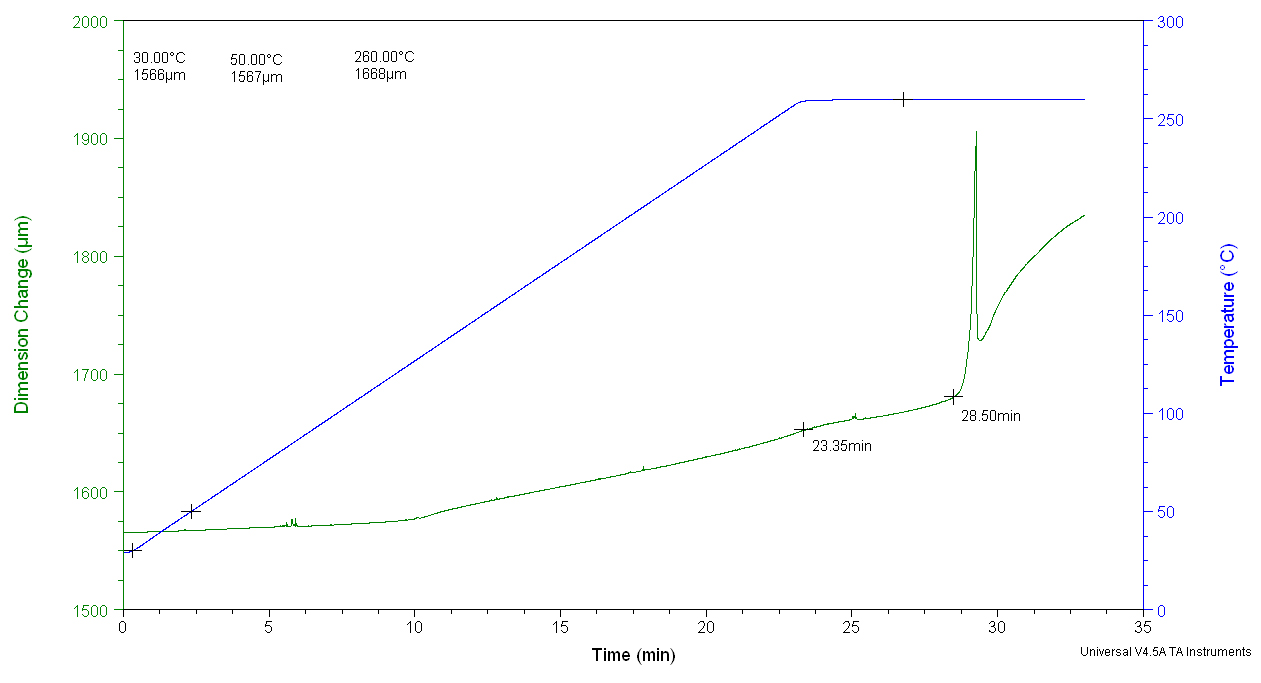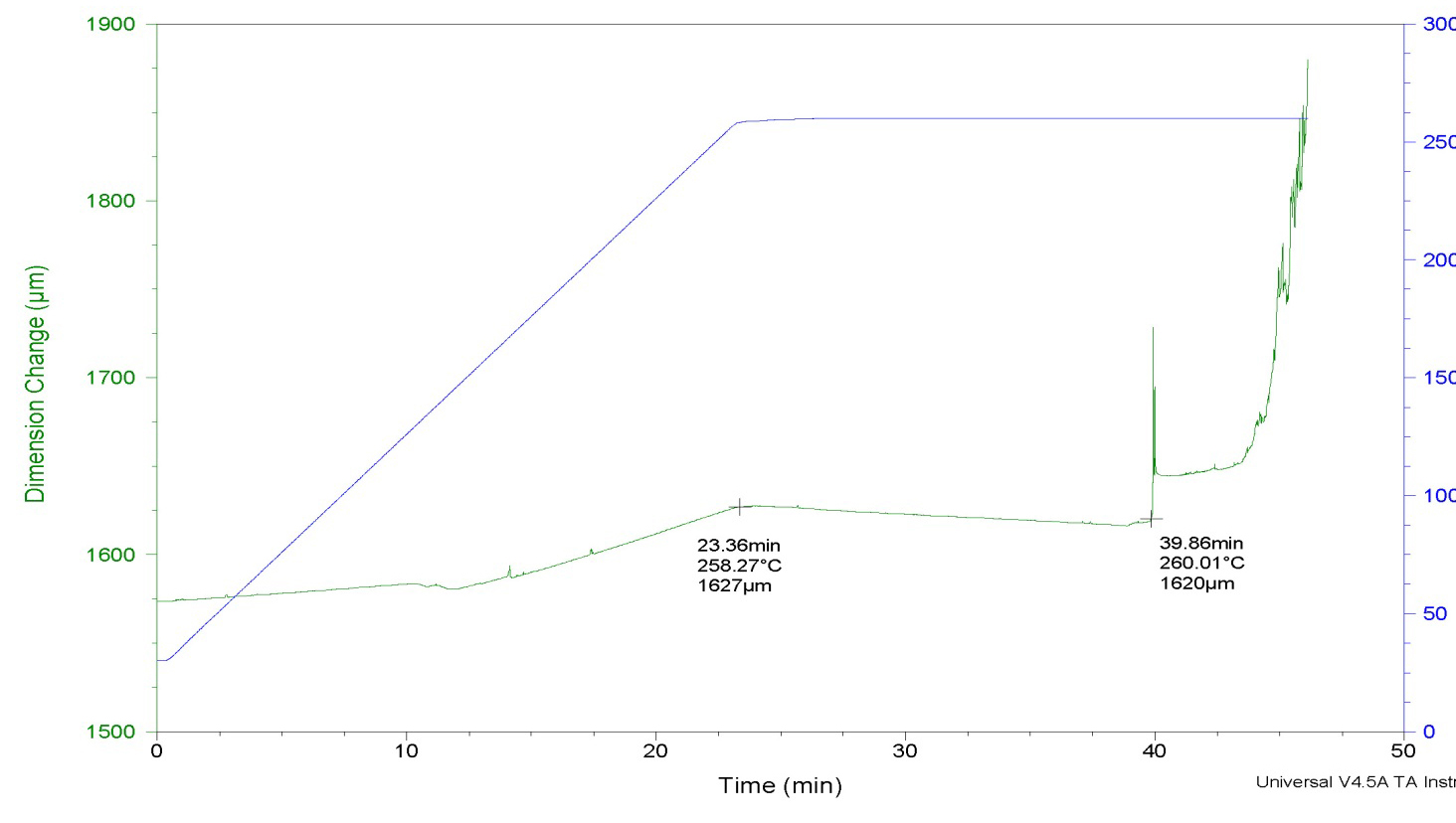BASE MATERIAL: WHAT TO CHOOSE?
- Time To Delamination (T260, T288 and T300):
Delamination or separation of the layers in printed circuit boards during the manufacturing process (particularly wave soldering) is a leading cause of product failure. Hence, there is the need for a quick test which can predict failure before production.
Cracking and delamination within PCBs can be cohesive or adhesive in nature and can occur within the weave, along the weave, or at the copper/epoxy interface
Decreased material strength of the printed board can be driven by a number of factors, including
- Non-optimized epoxy formulation
- Non-optimized glass surface treatments
- Absorption of moisture
- Bad soldering profile
- Insufficient epoxy cure (B-stage)
- Surface contamination (copper or epoxy)
- Non-optimized oxide treatment
- Non-optimized lamination
Thermomechanical Analysis (TMA), which measures dimensional change in materials with temperature, is an ideally suited technique for evaluating the onset of delamination in these materials.
The IPC-TM-650 2.4.24.1 test method describes a TMA method for the determination of the time up until which delamination of laminates and printed circuit board occurs

FIGURE 1
T260 refers to the time until delamination with isothermal at 260°C, T288 has isothermal at 288°C and T300 at 300°C.Figure 1
The time to delamination is determined as the time from the onset of the isotherm to failure. Failure is any event or deviation of the data plot where the thickness is shown to have irreversibly changed. The scan in Figure 1 is typical of an epoxy material at 260°C isothermal temperature
All of these characteristics can be readily quantified from the TMA curve as shown in Figure 1 and provide additional information valuable to proper processing and handling of the material. At 260°C, the TMA profile is initially flat (a slight creep occurs due to the force on the TMA probe) until delamination occurs, as clearly indicated by a sudden upward dimensional change. In the material in Figure 1, the time to delamination at 260°C is 5 minutes which was deemed to be unacceptable for normal processing.

FIGURE 2
Figure 2 shows the results for a second PC board where the 16 minute delamination time was acceptable.


